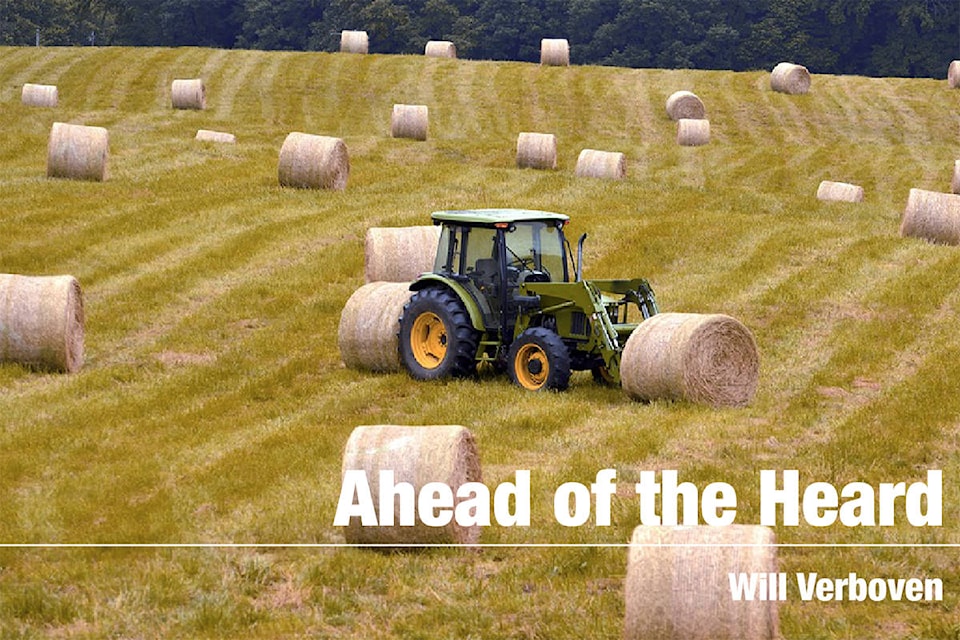Will Verboven
Ahead of the Heard
A highlight of recent travel to Newfoundland was a visit to the “Sealers Interpretation Centre,” dedicated to the province’s sealing industry. It was an enlightening look at the impact this primary industry had on the well-being and culture of the people who risked their lives to support their hard-pressed families. In its heyday the harvesting of seals for pelts, oil and meat involved thousands of men, dozens of ships and millions of dollars. The industry evolved with technology and efficiencies into a significant part of the Newfoundland economy. But in the spring of 1977, Brigitte Bardot arrived at the ice floes off the coast and overnight began the decimation of a traditional industry that now barely survives.
If the fading film career of this aging actress needed a boost she sure got it after close-up photos of her and an ever-so-cute seal pup were featured on the front covers of newspapers around the world. Animal rights lobby groups had discovered a sure-fire gravy train straight from the pockets of gullible donors everywhere. They also set the pattern for other lobby groups to exploit the use of publicity-hungry celebrities eager to promote their disparate causes. It’s an incredibly successful propaganda tool used to this day that has garnered hundreds of millions of dollars into the coffers of these nefarious groups.
The involvement of celebrities in discrediting the seal harvest actually only had a marginal impact on the industry – regulations were fine-tuned to address concerns but the annual harvest continued. The real damage was done in Europe where those same lobby groups launched impassioned campaigns about the morality of the hunt – always focusing on the cute little white seal pups. unbeknownst to most folks the harvest of newborn white pups was banned in 1984. Expedient European politicians in their haste to appease lobby groups quickly banned the importation of all seal products – easy to do for products that, outside of Norway, were not produced in Europe.
That impact devastated the seal harvest and the industry quickly collapsed along with the millions it provided in income to Newfoundlanders. The fact that the barely surviving industry is now of minor relevance doesn’t stop lobby groups – in 2016 another Hollywood starlet was flown in for a photo shoot with a cute pup and a new tirade was launched against an industry which hardly exists anymore. Ironically their success in destroying the seal industry has resulted in a diminishing cash flow. A classic case of biting the hand that feeds you.
As it happens, there is a perverse consequence to not harvesting seals, and not just in Newfoundland. The seal population, particularly of the Harp variety, has increased seven folds; there are now an estimated seven million on the east coast. Each adult seal eats approximately 1.2 tonnes of fish a year – mostly cod fish. Those are the same cod fish that the federal government placed a moratorium on fishing 25 years ago. The idea was that the moratorium would allow the cod fish numbers to recover, but it seems that the increasing number of seals are consuming any increase in cod fish numbers. At this rate, the fishery will never recover and the feds seem paralyzed as to what to do. Here is a hint – put a bounty on seals.
Ironically the explosion in seal numbers has also occurred in European, British and Scandinavian fishing grounds and has decimated local fisheries. To address this calamity the EU has decreed that seal culls will be allowed in order to preserve their commercial fishery. That would be the same EU that condemned the seal harvest in Canada and banned the importation of seal products. The hypocrisy of their action is astounding. Will EU politicians and bureaucrats admit they made mistake and lift their ban of Canadian seal products? Of course not, but there is a new situation on the horizon that could severely reduce seal numbers on the east coast and we will have climate change, in the form of global warming, to thank.
Harp seals give birth mainly on ice floes in the spring of each year. Over the past number of years those ice conditions have been disappearing because of early and warm spring weather conditions. Without the ice floes, newborn seal pups are being born in the water and drowning. Some seals will survive, but the population could be reduced by as much as 90 per cent, thereby potentially dramatically improving the cod fish recovery. Ironic isn’t it – all thanks to global warming.
